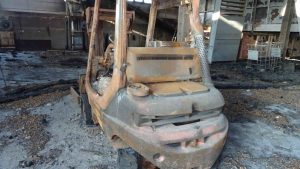Claims Processing
Loss events in the area of “machinery, mechanical engineering and industrial plants” are often complex and require professional claims management with appropriate claims handling.

Claims management for damages
With experience on both sides - the insurer and the injured claimant - necessary measures can be efficiently initiated and effectively resolved in multidisciplinary teams.
Overview
Claims processing or claims management
In the overwhelming majority of cases, it is determined or verified:
- Causality of the damage / plausibility check,
- technical responsibility for the claim,
- Cause of damage and
- Damage amount.
Claims Management
As a publicly appointed and sworn expert, one is always the link between the insurer, policyholder, insurance brokers, rehabilitation companies and the client, provided that the latter is not identical with the insurer or policyholder.
Plausibility check / causality of the damage event
The plausibility check and the investigation of the causality of a claim are of crucial importance, in claims processing and claims management, especially when insurers are involved. The aim is to ensure that the circumstances of the damage presented are consistent with the technical investigations on site. An on-site visit after the damage has occurred plays a central role here, as it enables an in-depth analysis. In contrast, essential information is lost in “audit on file” engagements.
The importance of a site visit in a complex claim is multifaceted:
-
Real-time assessment: An on-site appointment allows surveyors and experts to assess the damage immediately after it occurs. This “inventory analysis” is crucial for any claims management for further processing.
-
Avoidance of misconceptions: The personal inspection on site makes it possible to clarify possible misunderstandings or unclear facts that are often not even considered in written reports or documents “on file” because they were not recorded or were classified as “unimportant”.
-
Preservation of Evidence: A site visit ensures that all relevant evidence is preserved, including photos, videos, and witness statements (only in the party order, not the court order). This is critical to broaden the basis for sound causality analysis.
-
Interaction with stakeholders: In complex claims, various parties may be involved, including policyholders, witnesses, experts and employees of the injured company. A site visit provides an opportunity to communicate directly with all stakeholders and consider their perspectives.
-
Credibility and transparency: An on-site visit promotes the transparency of the expert opinion.
-
Causality analysis: investigating causality, i.e. determining whether and how the damage was caused by certain influences, often requires detailed knowledge and expertise. A site visit makes it possible to understand these complex relationships more precisely.
Cause of damage and technical responsibility
Determining the cause of damage is a decisive step in “claims processing machines” or “claims management machines” in the clarification of damage cases, as it forms the basis for the allocation of technical responsibility. This process plays a particularly prominent role in the event of damage to machinery, industrial plant and operating equipment. An on-site visit for damage analysis, if possible immediately after the damage has occurred, is essential.
The following aspects illustrate the importance of loss causation and technical responsibility:
1. technical clarification: the identification of the cause of the damage is crucial to determine whether the damage occurred due to which factors. This allows for an equitable allocation of technical responsibility (“quoting”).
2. prevention of recurrence: Accurately identifying the cause of damage can prevent similar damage from occurring again in the future.
3. evidence base: the determination of the cause of damage provides a solid basis for evidence in legal disputes.
4. protection against liability claims: It is of utmost importance for manufacturers, operators and insurers to correctly allocate technical responsibility in order to prevent or adequately respond to liability claims.
5. efficiency of claims settlement: an accurate loss causation analysis speeds up claims settlement by providing the basis for decision-making and facilitating negotiations between the parties involved.
6. quality assurance and improvement: identifying the cause of damage enables manufacturers and operators to make quality improvements and take preventive measures to avoid future damage.
Overall, early and accurate investigation of the cause of damage, preferably through an on-site visit, is essential to determine technical responsibility and clearly define the consequences for all parties involved. This contributes to safety, efficiency and equity in technical and industrial processes and minimizes the risk of damage and liability claims.
Amount of damage
In the event of an insurance claim, the determination of the amount of damage is based on the insurance conditions, which are of course known to the expert. Decisive are, for example:
- AFB: Fire Damage / Fire Damage,
- AHB: Liability damage,
- AMB: Damage to stationary machines,
- ABMG: damage to mobile machinery and equipment,
- Damage in transit.
Recommendation:
Experts may well arrive at different assessments of facts. Therefore, injured parties, usually the policyholder, should “consider” initiating expert proceedings, especially in the case of large claims (“major claims”).
